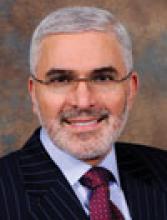“Connecting the dots” has emerged as a buzzword in our media and popular culture. This expression is a picturesque way to denote competence and implies an uncanny ability to recognize and integrate what appear to be multiple unrelated data points into an important, actionable pattern. An incisive decision or intervention often follows.
When I hear this expression, I contemplate the centrality of connecting the dots in psychiatric practice. In fact, it is a ubiquitous and indispensable approach to diagnosing and treating our patients. Psychiatrists are trained to be highly skilled at connecting not only one set of dots, but often a bewildering array of complex and disparate sets of dots related to each patient we evaluate and manage. It is impossible to arrive at an accurate psychiatric diagnosis and construct an appropriate and comprehensive treatment plan without connecting countless overt and covert dots related to interconnected pathologies across a patient’s brain, mind, and body. As part of the assessment, psychiatrists often presage the existence of dots that are not yet on their clinical radar and inquire about them with the patient and multiple corroborative sources. That’s what a good psychiatric interview and history taking usually entails.
Painting a diagnostic profile
The effective pursuit of connecting clinically relevant biologic, psychological, and social clinically relevant “dots” is an elegant mix of the art and science of psychiatry. By integrating a vast universe of clinical “dots,” (like an astronomer recognizing a galaxy in star-studded sky) psychiatrists can then identify their patients’ emotional topography, cognitive architecture, behavioral landscape, and psychodynamic geology. This enables us to formulate the patient’s clinical disorder across a matrix of biopsychosocial domains and paint a mosaic of “dots” representing predisposing, precipitating, perpetuating, and protective factors underpinning the patient’s psychopathology and illness course.
The emerging diagnostic profile of a patient leads to the next task of connecting another universe of dots related to launching a multifaceted treatment plan. An enormous number of dots have to be connected to determine a safe and effective treatment consistent with the patient’s demographics, lifestyle, social background, attitudes, beliefs, past and current medical history, family history, comorbidities, and laboratory data. Once those dots are connected and treatment begins, another phase of connecting the dots follows to monitor efficacy, safety, tolerability, and various clinical and functional outcomes related to treatment. Unless this phase is done expertly and meticulously, a patient’s remission, recovery, and return to wellness may be elusive and relapse or complications may develop.
We psychiatrists perform the Herculean task of connecting the dots many times a day on a heterogeneous group of patients with various psychopathologies, and we appear to do it effortlessly. This is a gratifying testimonial to the extensive and arduous years of training it takes to become skillful psychiatric physicians.
We always assume that other professionals also are connecting dots effectively in their respective areas of responsibility. Failure to connect the dots could result in a minor setback, or, in some cases, a catastrophic event. Aristotle defined “virtue” as excelling in one’s job. When we do our job well—diagnosing and healing mental, emotional, and behavioral brain disorders, preventing harm to self and others, and restoring wellness to ailing individuals—we psychiatrists are accomplishing “virtuous” acts and thus earn the privilege to be called “virtuosos.”


